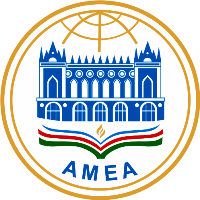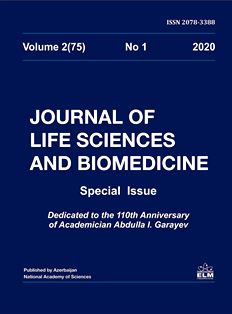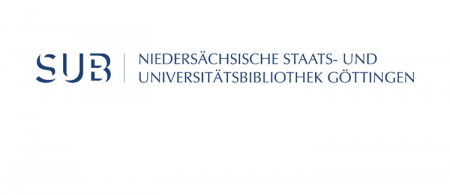
Diversity of the Triticeae genetic resources in the Karabakh region of Azerbaijan S.P. Mehdiyeva, M.E. Eldarov, S.S. Sharifova, M.A. Abbasov, A.J. Aliyeva, Z.I. Akparov
Diversity of the Triticeae genetic resources in the Karabakh region of Azerbaijan
http://dx.doi.org/10.29228/jlsb.34
S.P. Mehdiyeva1, M.E. Eldarov2, S.S. Sharifova2, M.A. Abbasov1, A.J. Aliyeva1, Z.I. Akparov1
1Genetic Resources Institute, Azerbaijan National Academy of Sciences, 155 Azadlıgh Ave, Baku AZ1106, Azerbaijan
2Khazar University, 41 Mehseti Str., Baku AZ 1096, Azerbaijan
For correspondence: mora271976@gmail.com; Meldarov@khazar.org; saida.sharifova@khazar.org;mehraj_genetic@yahoo.com; arzu2007@mail.ru; akparov@yahoo.com
Received: October 10, 2021; Received in revised form: October 13, 2021; Accepted: October 19, 2021
ABSTRACT
This paper gives an overview of the collection history for the species from the Triticeae Dum. tribe in the Karabakh region of Azerbaijan up to date of its occupation. By covering most of the Lesser Caucasus with the semi-desert and dry steppe climate, the Karabakh region of Azerbaijan has favorable conditions for grass diversity. There are 14 genera from the tribe Triticeae in Azerbaijan, of which historically the 10 genera also were found in the Karabakh region. The data in this article have been presented as a summary of information recorded in different literature sources, that would be useful for the planned monitoring of status, distribution, and preserving issues for the Triticeae species in the liberated areas.
Keywords: Karabakh region of Azerbaijan, Triticeae tribe, Aegilops L., Triticum L., Hordeum L., Secale L., Agropyron L., wild cereals
REFERENCES
Askerov A. (2016) Flora of Azerbaijan (Higher plants - Embryophyta). Baku: Tea Press, 444 p.
Askerov A. (2021) Study of the flora, vegetation and plant resources of Karabakh. Main directions of the law. "Biodiversity of Karabakh, soil and water resources: past, present and future" Proceedings of the online conference on the topic. Baku, p. 39.
Askerov E., Guliyev G., Iskendarov T., Karimov T. (2021) Diversity of liberated territories from occupation by Azerbaijani fauna and its restoration. "Biodiversity of Karabakh, soil and water resources: past, present and future" Proceedings of the online conference on the topic. Baku, p. thirty.
Huseynova I. (2021) Biodiversity, land and water resources of the liberated territories. “Biodiversity of the Black Garden, soil and water resources: past, present and future Materials of an online conference on the topic. Baku, 23.
Gurbanov E. (2021) Geobotanical study of summer pastures of the liberated territories ¬qi. “Biodiversity of the Black Garden, soil and water resources: past, present and future Materials of an online conference on the topic. Baku, p. 37
Mehdiyeva N. (2021) The potential potential of the medicinal flora of Karabakh. "Biodiversity of Karabakh, soil and water resources: past, present and future" Proceedings of the online conference on the topic. Baku, p. 44.
Masieva L. (2021) Water resources, research, restoration and efficient use of Karabakh. "Biodiversity of Karabakh, soil and water resources: past, present and future" Proceedings of the online conference on the topic. Baku, 130.
Akhadov D. R. (2021) Study of soils in the Karabakh region of the Republic of Azerbaijan. Bulletin of Science and Practice, 7(8): 65-72; doi: 10.33619/2414-2948/69/08
Grebennikov P.E. (1948) To the recognition of durum wheat in Azerbaijan. Proceedings of the Azerbaijan Institute, No. 3:13.
Grossgeim A.A. (1939) Flora of the Caucasus, Vol. 1. Baku: AzFAN USSR.
Zhukovsky P.M. (1928) A critical systematic review of the species of the genus Aegilops L. Tr. in Applied Botany, Genetics and Breeding, XVIII (Issue 1): 417-609.
Ivanov A.P., Dorofeev V.F. (1964) Analysis of the composition of wheat and sorghum populations in the Azerbaijan SSR. tr. in Applied Botany, Genetics and Breeding, 36 (Issue 1): 119-126.
Kuleshov N.N. (1927a) Expedition to Azerbaijan in 1926. Works on Applied Botany, Genetics and Breeding, 17 (4):
Mirza-zade R.I. (2021) Soils of Karabakh in the context of information space and museum work. Soil Science and Agrochemistry, 2: 81-86.
Musaev S.G. (1991) Cereals Azerbaijan. Baku: Elm, 420 c.
Mustafaev I.D. (1961) Material for the study of wheat, rye, barley and Aegilops of Azerbaijan. Baku: 63 c.
Mustafaev I.D. (1973) Wheat destroyer of Azerbaijan. Baku: 119 c.
Mustafaev I.D., Ali-zade A.V. (1980) New taxa of the genus Triticum L. in Azerbaijan. Izvestia of the Academy of Sciences of the Azerbaijan SSR, Series of Biological Sciences, 6: 27-30.
Tsvelev N.N., Probatova N.S. (2019) Grains of Russia. M.: Companies of scientific publications KMK, 646 p.
Akman H. (2021) Assessment of morphological and anatomical variability in Triticum species, Aegilops species, interspecific and intergeneric hybrids. Notulae Scientia Biologicae, 13(1): 10891. doi: 10.15835/nsb13110891
Bakhteev F.C. (1960) Systematics of cultivated barleys Moscow: Publ. Acad. Sci. SSSR (in Russian).
Blatner F.R. (2018) Taxonomy of the Genus Hordeum and Barley (Hordeum vulgare). In: Stein N., Muehlbauer G. (eds.) The Barley Genome. Compendium of Plant Genomes. Cham: Springer, p. 11-23; doi: 10.1007/978-3-319-92528-8_2.
Chano V., Domínguez-Flores T., Hidalgo-Galvez M.D. et al. (2021) Epigenetic responses of hare barley (Hordeum murinum subsp. leporinum) to climate change: an experimental, trait-based approach. Heredity,126: 748–762; doi: 10.1038/s41437-021-00415-y
Che Y., Song N., Yang Y. et al. (2018) QTL mapping of six spike and stem traits in hybrid population of Agropyron Gaertn. in multiple environments. Front. Plant Sci., 9: 1-11. doi: 10.3389/fpls.2018.01422
Daskalova N., Spetsov P. (2020) Taxonomic relationships and genetic variability of wild Secale L. species as a source for valued traits in rye, wheat and triticale breeding. Cytol. Genet.,54: 71–81; doi: 10.3103/S0095452720010041.
Dorofeev V.F. (1972) “The Wheats of the Transcaucasia (Botanical composition, evolution and role in breeding)”. Proceedings on applied botany, genetics and breeding, 47(1): 1-202 (in Russian).
Dorofeev V.F., Migushova E.F. (1966) Botanical diversity of the Transcaucasian Aegilops L. Proceedings on applied botany, genetics and breeding, 38(2): 152-158 (in Russian).
Dorofeev V.F., Migushova E.F. (1971) Aegilops umbellulata Zhuk. in the Transcaucasia. Bulletin of VIR, №19: 3-7. (in Russian).
Dorofeev V.F., Migushova E.F. (1973) The populations of Aegilopses in the Transcaucasia. Proceedings on applied botany, genetics and breeding, 50(1): 205-215 (in Russian).
Dorofeev V.F., Migushova E.F., Bershteyn E.M. (1969) Botanical composition of Caucasian Aegilops explored by N.I.Vavilov All-Union Institute of Plant Industry’s Expedition. Proceedings on applied botany, genetics and breeding, 40(2): 118-125 (in Russian).
Eldarov M., Aminov N., van Slageren M. (2015) Distribution and ecological diversity of Aegilops L. in the Greater and Lesser Caucasus Regions of Azerbaijan. Genet. Resour. Crop Evol., 62: 265–273; doi:10.1007/s10722-014-0151-0.pdf.
Frawley E.S., Ciotir C., Micke B., Rubin M.J., Miller A.J. (2020) An ethnobotanical study of the genus Elymus. Economic Botany, 74:159–177; doi: 10.1007/s12231-020-09494-0.
Klimko M., Nowinska R., Czarna A. (2015) Epidermal micromorphology of Hordelymus europaeus (l.) Jess. ex Harz (Poaceae). Steciana, 19(2): 89–96. doi: 10.12657/ steciana.019.010
Kobylyanskiy V.D. (1966) To the problem of wild Hordeum species distribution in the Transcaucasia. Proceedings on applied botany, genetics and breeding, 38(2): 144-152.
Kostivkovsky V., Young J.A. (2000). Invasive exotic rangeland weeds: A glimpse at some of their native habitats. Rangelands,22(6): 3–6.
Luo Y., Yang J., Du W., Pang Y. (2021) The complete chloroplast genome of Agropyron pectinatum (M. Bieb.) P. Beauv., Mitochondrial DNA, Part B, 6(9): 2512-2513; doi: 10.1080/ 23802359.2021.1959451
Manjit K., Priyadarshan P.M. (2007) Breeding Major Food Staples. Blackwell Publishing, 437 p.
Mao P., Huang Y., Wang X. et al. (2010) Cytological evaluation and karyotype analysis in plant germplasms of Elytrigia Desv.Agricultural Sciences in China, 9(11): 1553-156; doi: 10.1016/S1671-2927(09)60251-0.
Maraci Ö., Özkan H., Bilgin R. (2018) Phylogeny and genetic structure in the genus Secale. PLoS ONE, 13(7): e0200825; doi: 10.1371/journal.pone.0200825
Marino R., Volante A., Brandolini A., Heun M. (2018) A high-resolution einkorn (Triticum monococcum L.) linkage map involving wild, domesticated and feral einkorn genotypes. Plant breeding, 137(5): 682-690; doi: 10.1111/ pbr.12637
Mizianty M., Bieniek W., Czech A. et al. (2006)Variability and structure of natural populations of Elymus caninus (L.) L. and their possible relationship with Hordelymus europaeus (L.) Jess. ex Harz as revealed by AFLP analysis. Pl. Syst. Evol., 256: 193–200. doi: 10.1007/s00606-005-0365-x.
Oliynyk M.P., Gubar L.M. (2019). Syntaxonomy of plant communities with diagnostic species of genus Elytrigia. Chornomors’k. bot. z., 15 (1): 26–35; doi: 10.32999/ksu1990- 553Х/2019-15-1-3.
Qi J., Cao W-X., Jiao T. et al. (2013) Comprehensive Evaluation of Wild Elymus L. Germplasm in Inner Mongolia. Proceedings of the 22nd International Grassland Congress., USA: 391 -392.
Romero M.C., Carretero J.F., Lopez G.B. (2018) Eremopyrum (Ledeb.) Jaub. & Spach, a new genus for the flora of Western Europe (Iberian Peninsula). Acta Botanica Malacitana, 43:125-127; doi:10.24310/abm.v43i0.3798.
Rossi G., Guzzon F., Bickler Ch., et al. (2020) Seed germination under osmotic stress across different wild populations of mountain rye (Secale strictum (C.Presl) C.Presl) Plant Biosystems - An International Journal Dealing with all Aspects of Plant Biology, p. 1-16; doi: 10.1080/11263504.2020.1857869
Soreng R.J. Peterson P.M., Romaschenko K. et al. (2017) A worldwide phylogenetic classification of the Poaceae (Gramineae) II: An update and a comparison of two 2015 classifications. Journal of Systematics and Evolution, 55(4): 259-290; doi: 10.1111/ jse.12262
Suchowilska E., Szafranska A., Stowik E., Wiwart M. (2019) Flour from Triticum polonicum L. as a potential ingredient in bread production. Cereal Chemistry, 96(3): 554-563; doi: 10.1002/cche.10155
Taheri M.T., Alavi-Kia S.S., Mohammadi S.A., Vahed M.M. (2018) Assessment of genetic diversity and relationships among Triticum urartu and Triticum boeoticum populations from Iran using IRAP and REMAP markers. Genetic Resources and Crop Evolution,65: 1867–1878; doi: 10.1007/s10722-018-0660-3.
Talini R.F., Brandolini A., Miculan M., Brunazzi A., Vaccino P., Pe M.E., Dell’Acqua M. (2020) Genome-wide association study of agronomic and quality traits in a world collection of the wild wheat relative Triticum urartu. The Plant Journal, 102: 555–568; doi: 10.1111/tpj.14650
Tang Z.X., Ross K., Ren Z.L. et al. (2011) Secale. In: C.Kole (ed) Wild crop relatives: genomic and breeding resources. Berlin, Heidelberg: Springer, p 367-397; doi: 10.1007/ 978-3-642-14228-4_8
Ugrenovich V., Solarov M.B., Pezo L. et al. (2018) Analysis of spelt variability (Triticum spelta L.) grown in different conditions of Serbia by organic conditions. Genetika, 50(2): 635-646. doi: 10.2298/GENSR1802635U.
van Slageren M.W. (1994) Wild wheats: a monograph of Aegilops L. and Amblyopyrum (Jaub. & Spach) Eig (Poaceae). Wageningen Agric. Univ. Papers,94(7): i-xiv, 1–512
Vavilov N.I. (1957) World resources of cereals, grain leguminous crops and flux, and their utilization in plant breeding. General part. Agroecological survey of the principal field crops. Leningrad: 462 p. (in Russian).
Vavilov N.I. (1962) Problems of geography, phylogeny and breeding of wheat and rye. Plant resources and issues of cultivated plants taxonomy. Selected works in five volumes. Vol. III. Moscow-Lenigrad: 532 p. (in Russian).
Vavilov N.I. (1964) World resources of cereals grain leguminous crops and flux, and their utilization in plant breeding. Wheats. Moscow-Lenigrad: 123 p. (in Russian).























